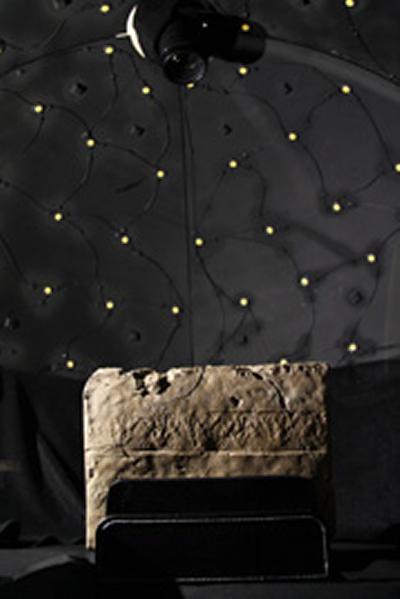New technology allows researchers to come closer than ever to cracking the world’s oldest undeciphered writing system

Researchers from the University of Southampton and University of Oxford have developed a system for examining some of the world’s most important historical documents in intricate detail.
Reflectance Transformation Imaging (RTI) System for Ancient Documentary Artefacts (funded by the UK Arts and Humanities Research Council) allows a researcher to move a virtual light source across the surface of a digital image of an artefact and use the difference between light and shadow to highlight never-seen-before details.
The system was recently used on objects held in the vaults of the Louvre Museum in Paris and images have now been made available online for free public access on the Cuneiform Digital Library Initiative website.
Among these documents are manuscripts written in the so-called proto-Elamite writing system used in ancient Iran from 3,200 to 3,000 BC and which is the oldest undeciphered writing system currently known. By viewing the extremely high quality images of these documents, and by sharing them with a community of scholars worldwide, a team from Oxford hope to crack the code once and for all.
The RTI system was developed by Dr Graeme Earl of the Archaeological Computing Research Group at the University of Southampton and Dr Kirk Martinez of Electronics and Computer Science at Southampton. It comprises of a dome with 76 lights inside and a camera positioned at its top. A manuscript is placed in the centre of the dome, where-after 76 photos are taken each with one of the 76 lights individually lit. In post-processing the 76 images are joined so that the researcher can move the light across the surface of the digital image and use the difference between light and shadow to highlight otherwise hidden details.

Dr Kirk Martinez comments: "We aimed to make a modern, fast, but not too expensive version of this imaging system - and it’s great to see we succeeded in making something which is producing valuable data for humanities researchers."
Dr Jacob Dahl, a co-leader of the Cuneiform Digital Library Initiative and a member of Oxford University’s Faculty of Oriental Studies, says: “I have spent the last ten years trying to decipher the proto-Elamite writing system and, with this new technology, I think we are finally on the point of making a breakthrough.
“The quality of the images captured is incredible. And it is important to remember that you cannot decipher a writing system without having reliable images because you will, for example, overlook differences barely visible to the naked eye which may have meaning. Consider for example not being able to distinguish the letter i from the letter t.”
He believes the writing system he is examining may be even more interesting than previously thought: “Looking at contemporary and later writing systems, we would expect to see proto-Elamite use only symbols to represent things, but we think they also used a syllabary – for example 'cat' would not be represented by a symbol depicting the animal, but by symbols for the otherwise unrelated words 'ca' and 'at.
“Half of the signs used in this way seem to have been invented ex novo for the sounds they represent – if this turns out to be the case, it would transform fundamentally how we understand early writing where phonetecism is believed to have been developed through the so-called rebus principle (a modern example would be for example "I see you", written with the three signs 'eye', the 'sea', and a 'ewe').”
Some features of the writing system are already known. The scribes had loaned - or potentially shared - some signs from or with Mesopotamia, such as the numerical signs and their systems and signs for objects like sheep, goats and cereals. Nevertheless, 80-90 percent of the signs remain undeciphered.
For more information visit Digital Humanities or ECS at the University of Southampton.